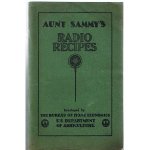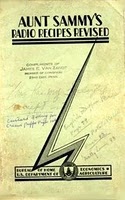 There’s no more critical economic sector supporting a thriving and growing American economy than the great work of the nation’s farmers, livestock, and fisheries operators. A healthy agri-sector not only makes for a healthy American family, but also is of great importance as a reliable export contributor.
There’s no more critical economic sector supporting a thriving and growing American economy than the great work of the nation’s farmers, livestock, and fisheries operators. A healthy agri-sector not only makes for a healthy American family, but also is of great importance as a reliable export contributor.
The Department of Agriculture’s yearly report, “Agricultural Cooperative Statistics”, is published annually to provide information on the position and trends among the America’s farmer, rancher, and fishery cooperatives. The latest report with 2016 data was just released.
These statistics are used for cooperative benchmarking, research, technical assistance, education, planning, and public policy. The collection, analysis, and dissemination of cooperative statistics are managed by the United States Department of Agriculture (USDA).
The GPO Online Bookstore – Easy Access to Federal Publications
HOW DO I OBTAIN THIS RESOURCE?
Shop Online Anytime: You can buy eBooks or print publications —with FREE Standard Shipping worldwide— from the U.S. Government Online Bookstore at https://bookstore.gpo.gov.
- Click here to purchase Agricultural Cooperative Statistics 2016
- Click here to purchase Agricultural Statistics 2016
- Click here to purchase Running a Food Hub: A Business Operations Guide, V. 2
- Click here to purchase Basic 2018; Harmonized Tariff Schedule On CD-ROM
- Click here to browse our Agriculture and Farming collection
Shop our Retail Store: Buy a copy of any print editions from this collection at GPO’s retail bookstore at 710 North Capitol Street NW, Washington, DC 20401, open Monday–Friday, 9 a.m. to 4 p.m., except Federal holidays, Call (202) 512-0132 for information or to arrange in-store pick-up.
Order by Phone: Call our Customer Contact Center Monday through Friday, 8 am to 5:30 pm Eastern (except US Federal holidays). From US and Canada, call toll-free 1.866.512.1800. DC or International customers call +1.202.512.1800.
Visit a Federal depository library: Search for U.S. Government publications in a nearby Federal depository library. You can find the records for most titles in GPO’s Catalog of U.S. Government Publications.
About the author: Blogger contributor Ed Kessler is a Promotions Specialist in GPO’s Publication and Information Sales program office.



 Posted by Trudy Hawkins
Posted by Trudy Hawkins 









